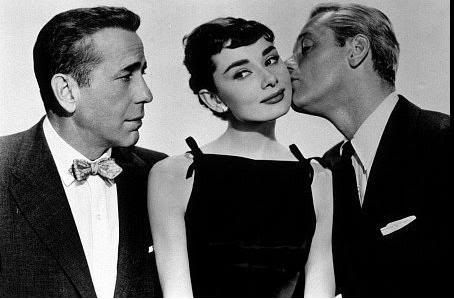
Humphrey Bogart was the biggest star in the world in 1947. He used his box office stardom as a vehicle to get him the largest contract in Hollywood history at that point. He also received some power from Warner Bros. – namely script and director approval. His first major movie with the new power was The Treasure of the Sierra Madre (1948).
The script for the movie had been on the shelves of the Warner lot for many years. They were just waiting for the right writer to come along and work out some kinks. The writer would be John Huston, who had returned from working for the government making films during World War II. This was a movie he wanted to make before the war, but was unable to.
Sierra Madre was based on the book by B. Traven. Traven was a mysterious man who never showed his face and enjoyed great fame by being anonymous. He was rumored to be a Communist and one of his stipulations in selling the rights to any of his books was that it could not be sold to any capitalist country. Some how, Warners got the rights.
For a major star, the role of Fred C. Dobbs was a risk. Even the movie itself was a risk. There is no female lead and really no females in the story at all – the only ones who appear do so in the background of the Indian camp. This is a male dominated movie, which might turn some people off. It is also a deeply moralistic one, which makes it worth watching.
Three American prospectors: Howard, Curtin and Dobbs, traverse the wilderness of Mexico in search for gold. Upon reaching the mountains and finding their fortune, some strange things happen to the characters. Howard, played by Walter Huston, is the old man who has been through the battles. He knows how to prospect and is only brought along by the two younger men because of his knowledge. He predicts that once the gold is found, the power of it will change the two younger men. He is right in his prediction, but is basically powerless to stop the greed. He volunteers to help a group of Indians who have a sick child. He saves the child’s life and is asked to be the medicine man for the Indians. Howard enjoys his role as the sage with the Indians more than he did with the young Americans.
Curtin is a different man. He seems to be the same type of man as Dobbs in the beginning. The two of them meet while working in the town of Tampico. The two are American outcasts, so they join forces. When the man who hired them doesn’t pay them, Dobbs and Curtin take the boss for a little ride to get their money. With their money, they find Howard and take off for the Mexican mountains. Curtin reacts the most admirably of the two youngsters. The gold takes hold of him, he even thinks seriously about Dobbs’ suggestion that they take Howard’s gold while he is off at the Indian camp. But in the end, Curtin is not corrupted by the gold. In fact, when the gold is lost in the wind, Curtin looks at it as a blessing. He is now free to pursue his dream of a farm, while not having to worry about protecting his fortune.
Dobbs is pure evil. This is a change that most major Hollywood stars would never make. Bogie did it, playing the bad guy, and was successful in it. Dobbs is what makes the movie. His decent into madness is something special to watch. It is also something that would not have happened had another actor played the role. Bogie had plenty of experience playing the evil gangster and the man with morals. In Tampico, Bogie has some morals. He fights for his money when he and Curtin are taken for a ride by their employer. He seeks out Howard and puts up Curtin’s half for the expedition. But when that gold power comes rolling in, Dobbs becomes paranoid. He believes the two other men are trying to take his gold. In order to prevent this, he decides to take theirs.
He encourages Howard to go to the Indian camp. Then when Howard is away, he tries killing Curtin. Believing he has been successful, he takes Howard’s and Curtin’s gold, along with his, and tries to make it back to Tampico. He almost makes it, but some Mexican bandits stop him and kill him. The bandits are after guns and money; they believe the pouches the burros are carrying are filled with sand. So they dump all the gold out of the pouches in order to make it into town to sell the burros.
Their plot is stopped and they are rounded up and executed. By the time Curtin comes around and finds Howard at the Indian camp, none of the gold can be found as a wind storm has scattered the power throughout the desert.
Sierra Madre is the best performance of Bogart’s career, yet he was not nominated for an Academy Award. The picture won two awards. John Huston took home the best director Oscar and his father, Walter, took home the best supporting actor award.







